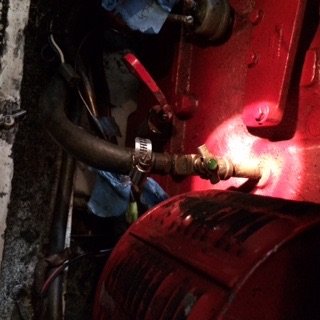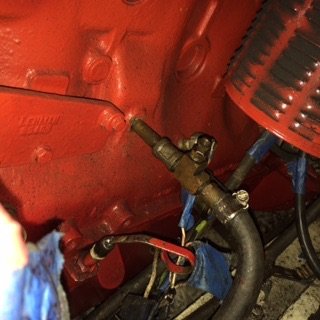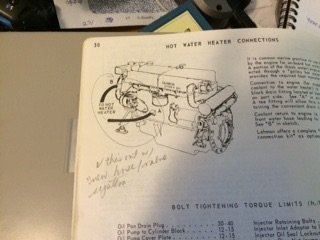Thanks, Eric and pssneeld,
We brought the engine book home and I found the enclosed diagram showing where the hot water heater hookup is, and it is the same spot that we located on the engine. pssneeld: We will look at the support of these hoses and make sure we feel comfortable with them. Thanks for the tip.
Once we drain the antifreeze and add a couple of rounds of flush water, I'm trying to figure out whether we need to save all of that water to bring to our household hazardous waste event. Our engine holds 5 gallons of coolant, so we are talking about a lot of mostly water to haul in as hazardous waste. At some point do you feel comfortable discharging the water overboard, or as a matter of routine do you just bring it all in as hazardous waste?
Thanks again for the advice for such a novice at all of this.
Michelle







